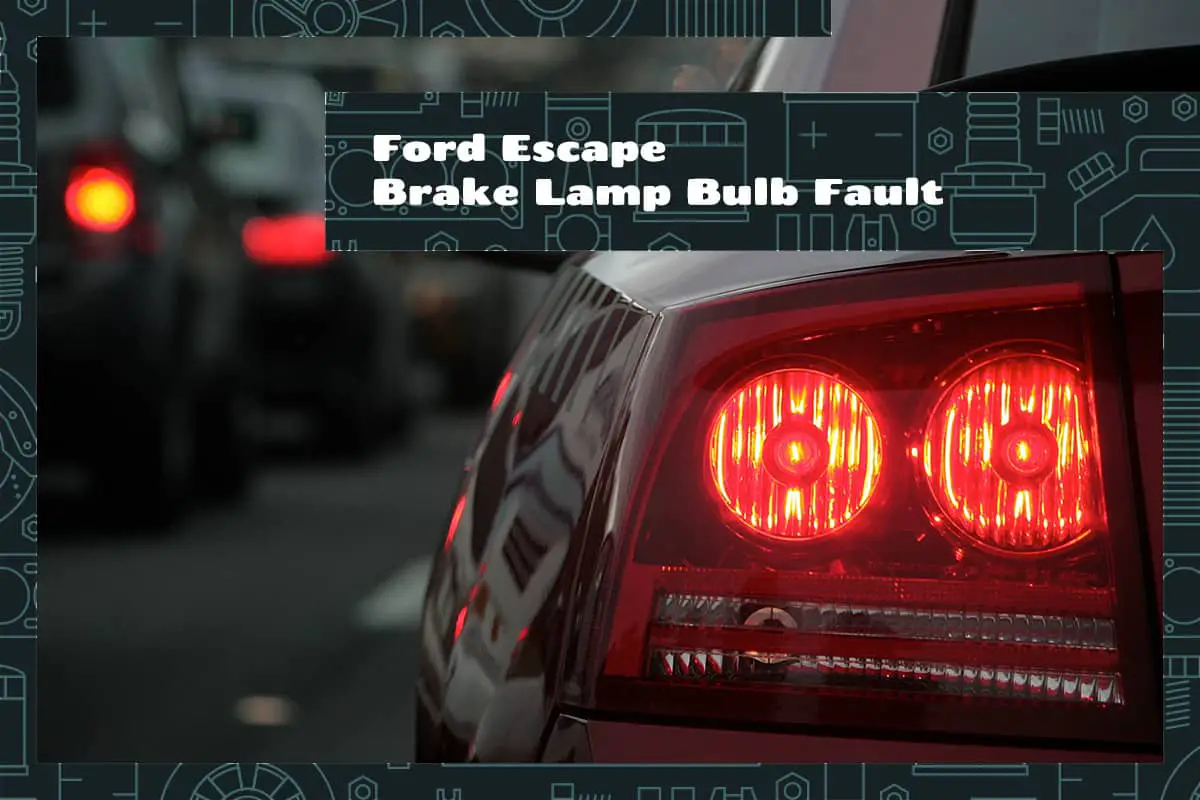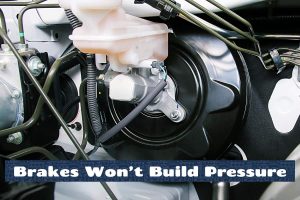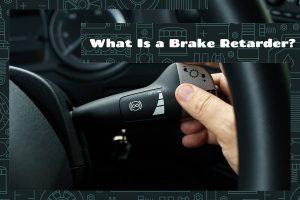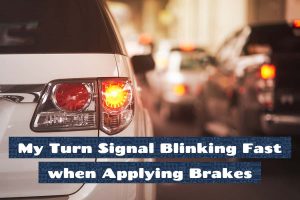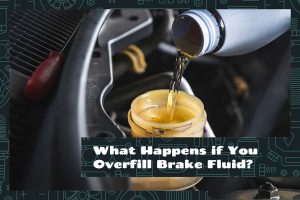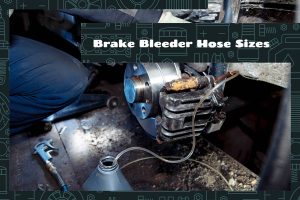Brake lights play a crucial role in vehicle safety, as they alert other drivers when you are slowing down or stopping. For Ford Escape owners, it’s essential to keep these lights in good working condition to ensure safe driving. A common issue that can arise with brake lights is a bulb fault, which can lead to dim, flickering, or unresponsive brake lamps.
Ford Escape brake lamp bulb faults can be caused by:
- Burnt-out bulbs
- Incorrect bulb type
- Oxidized bulb contacts
- Damaged or frayed wiring
- Loose connections
- Blown fuses
- Damaged fuse box
- Misaligned switch
- Faulty switch
This article will cover the various causes of brake lamp bulb faults, how to diagnose the issue, and step-by-step instructions to fix the problem.
Understanding the Ford Escape Brake Lamp System
The Ford Escape brake lamp system is made up of four main parts that work together to make sure your brake lights turn on when you press the brake pedal. Here’s a simple breakdown of these parts:
- Bulbs—These are the actual lights that turn on when you brake. They need to be the right type for your car and in good condition.
- Wiring—Wires carry electrical power from your car’s battery to the brake light bulbs, so they can light up.
- Fuses—Fuses protect your car’s electrical system by stopping the flow of electricity if there’s a problem, like a short circuit.
- Brake light switch—This switch is connected to your brake pedal. When you press the pedal, it tells the brake lights to turn on.
These parts must work together correctly for your brake lights to function properly.
Identifying Brake Lamp Bulb Faults
To spot a brake lamp bulb fault in your Ford Escape, you need to know the common symptoms. Keep an eye out for the following:
- Unresponsive brake lights—If your brake lights don’t turn on when you press the brake pedal, there might be a problem with the bulbs, wiring, fuses, or brake light switch.
- Dim or flickering lights—This could be a sign that your brake light bulbs are wearing out or that there’s an issue with the wiring or bulb contacts.
- Warning messages on dashboard—Your car’s dashboard might show a message like “Check Brake Lights” if there’s a problem with the system.
Causes and Fixes of Brake Lamp Bulb Fault for Ford Escape
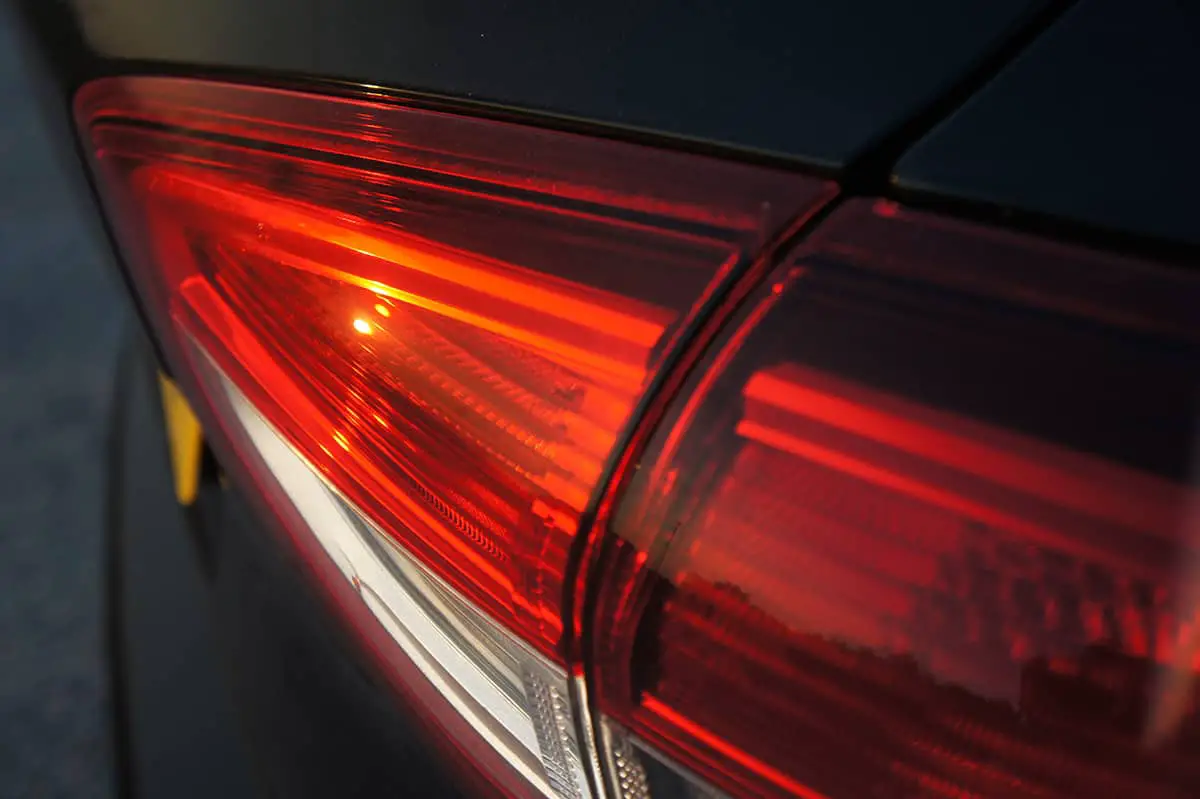
In this section, we’ll look at the different causes of brake lamp bulb faults in Ford Escape vehicles and how to fix them. We’ll cover issues related to bulbs, wiring, fuses, and the brake light switch.
1. Bulb-related issues
Burnt-out bulbs
A burnt-out bulb is the most common reason for brake light failure. Bulbs don’t last forever and will eventually burn out after some time.
Fix:
- Purchase the correct replacement bulb for your Ford Escape (check your owner’s manual for the right type).
- Turn off your car and remove the keys from the ignition.
- Open the trunk and locate the brake light assembly on the inside of the trunk lid.
- Remove the brake light assembly by unscrewing or unclipping it.
- Take out the old bulb by twisting it counterclockwise and pulling it out of the socket.
- Insert the new bulb and twist it clockwise to lock it into place.
- Reattach the brake light assembly and close the trunk.
- Test your new brake light by pressing the brake pedal.
Incorrect bulb type
Using the wrong type of bulb can lead to poor performance or even damage the brake light system.
Fix:
- Check your owner’s manual to find the correct bulb type for your Ford Escape.
- Replace any incorrect bulbs with the right ones by following the steps above.
Oxidized bulb contacts
Over time, the contacts on the bulb can become dirty or corroded, causing a weak connection and dim or flickering brake lights.
Fix:
- Remove the bulb following the steps mentioned earlier.
- Clean the contacts on the bulb and socket using a small wire brush or fine-grit sandpaper.
- Apply a small amount of dielectric grease to the contacts to prevent future oxidation.
- Reinstall the bulb and test the brake lights.
2. Wiring problems
Damaged or frayed wiring
Damaged wiring can disrupt the flow of electricity to the brake lights, causing them to malfunction.
Fix:
- Inspect the wiring leading to the brake light assembly for visible damage.
- If you find damaged wires, wrap them with electrical tape or use a wire connector to join the broken ends.
- If you’re not comfortable with repairing wiring or the damage is extensive, consult a professional mechanic.
Loose connections
If the wires connected to the brake light assembly are loose, the brake lights may not work properly.
Fix:
- Check the connections between the wiring and the brake light assembly.
- Tighten any loose connections and ensure they’re securely fastened.
3. Fuse-related issues
Blown fuses
A blown fuse can cut off the electrical supply to the brake lights.
Fix:
- Consult your owner’s manual to locate the fuse box and identify the brake light fuse.
- Remove the fuse and check if it’s blown (the metal strip inside will be broken).
- Replace any blown fuses with new ones of the same amperage rating.
Damaged fuse box
A damaged or corroded fuse box can prevent the brake light system from receiving power.
Fix:
- Inspect the fuse box for visible damage, corrosion, or loose connections.
- Clean any corroded contacts with a wire brush or fine-grit sandpaper.
- If the fuse box is damaged, consult a professional mechanic for replacement.
4. Brake light switch malfunctions
Misaligned switch
The brake light switch may become misaligned, preventing it from activating the brake lights when the pedal is pressed.
Fix:
- Locate the brake light switch near the top of the brake pedal arm.
- Check if the switch is properly aligned with the brake pedal.
- If misaligned, carefully adjust the switch or its mounting bracket until it aligns with the pedal.
- Test the brake lights to ensure they activate when the pedal is pressed.
Faulty switch
A faulty brake light switch can fail to send the signal to turn on the brake lights when the pedal is pressed.
Fix:
- Locate the brake light switch near the top of the brake pedal arm.
- Disconnect the wiring harness from the switch.
- Unscrew or unclip the switch from its mounting bracket.
- Install the new switch by screwing or clipping it into place, making sure it’s properly aligned with the brake pedal.
- Reconnect the wiring harness and test the brake lights to ensure they work correctly.
FAQs
1. How often should I replace my brake light bulbs?
The typical lifespan of a brake light bulb is one year, but this is just a rough estimate. It’s a good idea to check your brake lights every few months to make sure they’re working correctly. Replace the bulbs as soon as you notice any issues, like dimming, flickering, or failure to light up.
2. Can I use any type of bulb for my Ford Escape brake lights?
No, you should always use the correct type of bulb recommended by Ford for your Escape. Check your owner’s manual to find the right bulb type for your vehicle. Using the wrong bulb can cause poor performance or damage the brake light system.
3. Can a faulty brake light switch affect other vehicle functions?
A faulty brake light switch can sometimes affect other vehicle functions since the system needs to know when you’re braking to disengage properly. However, this is not always the case, and the primary concern with a faulty brake light switch is the brake lights not working correctly.
